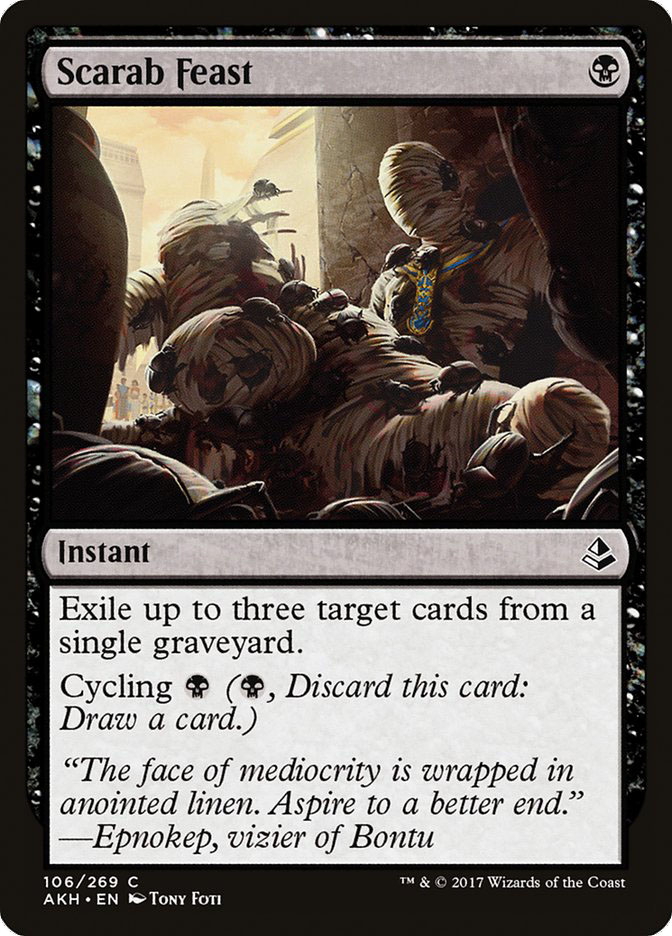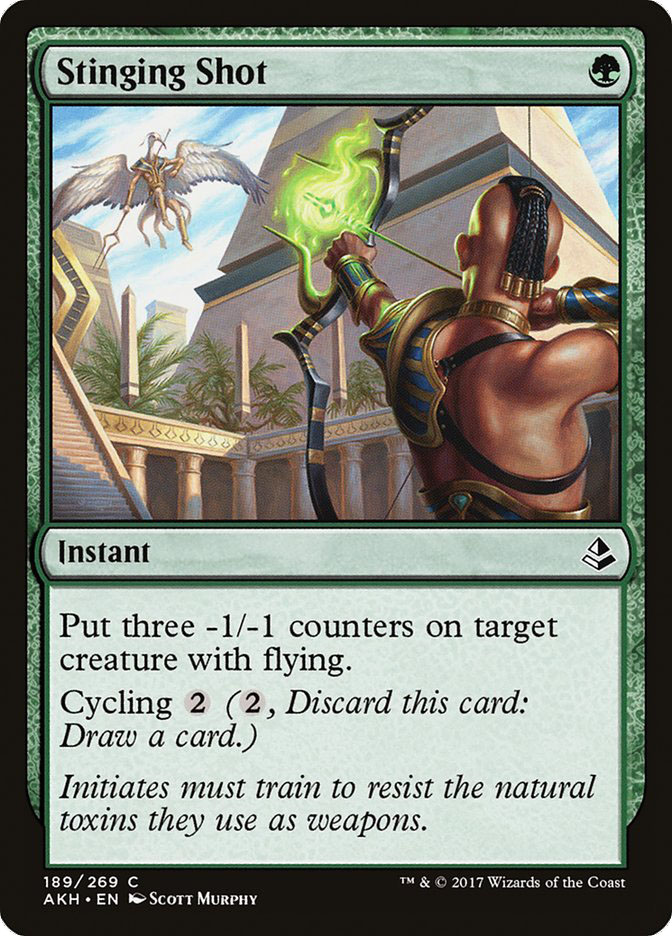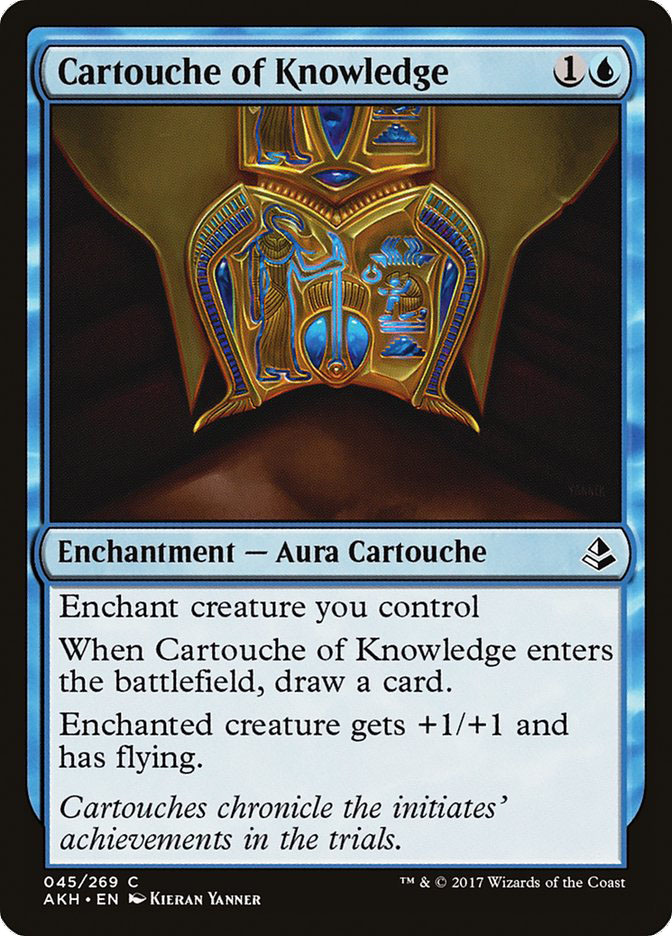Note: If you’re not familiar with Team Draft and you didn’t read my last article, I suggest you do so before reading this one.
Just like regular drafting, every Team Draft format is different. For example, in Shadows over Innistrad, flip cards changed the dynamic. Taking flip cards first was bad because the person sitting to your right knew what color to cut. You could try your best to figure out what your opponents were doing, but they could also be bluffing when they took late flip cards. While Amonkhet doesn’t have such a different environment, there are still some important things to note about its Team Draft format.
Number of Playables
Hate drafting is a large portion of Team Drafting. This combined with a six-man pod makes the decks substantially worse. But in Amonkhet Team Draft, this isn’t as bad as usual.
The aggressive decks are worse because it’s harder to get all the pieces, given hate drafting and a six-player pod. This makes cycling cards substantially less punishing. That’s the key observation. If cycling cards are less punishing, you’ll rarely ever end up with fewer than 23 playables in a Team Draft deck. Sure, maindeck the second copy of Stinging Shot, or maybe you have to play one Scarab Feast. This isn’t that bad (although it certainly isn’t good).
This makes hate drafting a worse strategy. Yes, you should take the bombs to avoid playing against them, but the plan of destroying your neighbor’s draft is simply less likely to work in this format. They won’t have to branch off into a third color as often, and even if they do, there’s a fair amount of fixing at common.
In general, the number of playables in current sets is quite large in comparison to that of much older sets. You’ll hear Team Draft veterans talk about how aggressively to hate draft. While you still should be hate drafting in Team Draft, it’s not as important as it once was, especially in Amonkhet.
Discuss Preferences
This is crucial for success with any team in any format, but it’s exacerbated in Amonkhet.
In the New York City Team Draft League, Aether Revolt season, my team went undefeated. When discussing with my teammates why the season went so well (other than the fact that we are pretty great), we came to the conclusion that we were all able to predict each other’s picks quite accurately. Floating was easy. My teammates knew that I valued the Grixis Aether cycle higher than premium removal, which made those more of a signal than something like Daring Demolition.
So why is understanding preference more important for Amonkhet Team Draft? Well, there really isn’t a consensus pick order for this format. And while it’s understood that aggressive decks are the best decks, given that they’re worse in Team Draft, players may draft quite differently.
For example, I have Cartouche of Knowledge as the best blue common. From what I understand, most players have that slot attributed to either Aven Initiate or Essence Scatter. In fact, more than that, I take Cartouche of Knowledge very highly in general, as I think it’s one of the best commons in the set and am not unhappy first-picking it. Knowing this can give my team an edge. If the card wheels, something that seems to happen a fair bit in my drafts online, I am likely not in blue.
But this isn’t the only common. There are plenty. In last week’s Team Draft Super League, Sam Black was taking Cartouche of Solidarity extremely highly. I agree with his picks, as I also like that Cartouche, but my point is that there are a variety of commons and uncommons that different players rate on a drastically different level. Be aware of these commons for you teammates so that you can predict their drafts easily. Know their preferences.
Hopefully you can take this knowledge and crush some local Team Drafts. And if you’re going to Grand Prix Cleveland, feel free to come say hi. Maybe we can even Team Draft!





